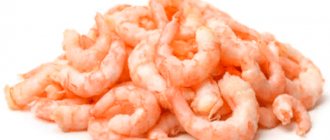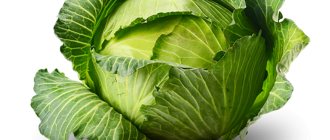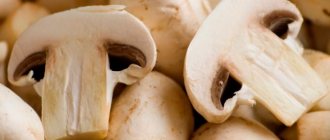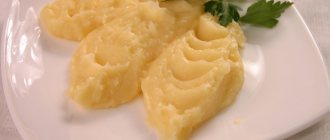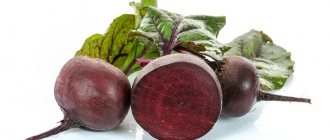Dried fruits are an excellent alternative to sweets. They have a positive effect and contain a large amount of vitamins and important elements. Dried fruits can be eaten separately or added to cereals, desserts and other dishes. Compotes are especially tasty and healthy. In this article we will find out at what age you can give your child dried fruits.
Nutritional value
Throughout the year and especially during the period of shortage of fresh domestic fruits, it is dried fruits that will become an additional source of microelements and vitamins for your fidget.
Fructose contained in the raw material provides sweetness to the product. Unlike sugar, this substance is not absorbed through the intestinal walls too quickly. This means that the child will receive the energy necessary for active games for a long time.
Among the variety of dried fruits, the properties that are most beneficial for a child are:
- dried apricots – necessary for growth;
- dried figs are a high-calorie product that improves digestion and increases appetite; but, if the child is plump, it is better to refuse dried figs;
- raisins are usually included in children’s diets to strengthen the immune system;
- dates – with the daily consumption of several things, the child’s endurance increases, his muscles and bones become stronger;
- prunes – enrich the child’s body with vitamins A and E, as well as calcium, iron and vegetable proteins.
Compote made from any combination of the above dried fruits always turns out very tasty. Children drink it with pleasure.
Types of dried fruits
- Dried apricots perfectly restore strength and energy, remove excess fluid from the body and normalize blood pressure, and prevent constipation in an infant. It contains an increased amount of magnesium, phosphorus, potassium and is necessary for full growth;
- Raisins are the best dried fruit for immunity. It supplies the body with energy and relieves fatigue, improves sleep and the functioning of internal organs, and normalizes metabolism. Raisins are obtained by drying grapes. But unlike the latter, dried fruit does not spoil and retains its beneficial properties for a long time;
- Prunes enrich the child’s body with calcium, vitamins A and E. They improve vision and skin condition, strengthen bones and teeth, and effectively help with constipation. Prunes cleanse the body and improve intestinal function, improve mood and have a positive effect on the functioning of the heart;
- Dates are an excellent source of carbohydrates and energy. They increase endurance and performance, strengthen muscles and bones, and improve the functioning of digestion. Dates have a positive effect on brain function and memory;
- Dried figs improve appetite and digestion. It is great for babies who eat poorly and are slowly gaining weight, improves blood composition and hematopoiesis, and prevents anemia. However, due to its high calorie content, it is not recommended for overweight and overweight children.
What's the catch?
Dried fruits have a lot of beneficial properties, but sometimes they can be contraindicated. To extend shelf life, most of these products that you can buy in stores are treated with preservatives and other chemical compounds.
The most common preservatives include sorbic acid. Usually on the packaging they are listed under the codes E200, 201 and 202. The minimum amount of these compounds used in the production of dried fruits is considered safe.
Dangerous: sulfur dioxide and various sulfites (they are hidden in the composition under the codes E220-260), which are used to treat pieces of dried fruit so that they look appetizing and do not spoil for a long time. Sulfur-based compounds can cause allergies and various diseases of the stomach, intestines and respiratory tract. Therefore, before choosing dried fruits for preparing compote for your child, you should carefully study the information on the packaging.
How to choose and prepare dried fruits
- Before purchasing, carefully study the composition, expiration date and production date. Choose a natural product or products with a low content of preservatives (E200-202);
- Examine the fruits for appearance. They should be dark, nondescript tones with uneven coloring. Bright and rich colors, uniform coloring on each side indicate the addition of dyes and chemical additives;
- Do not take fruits with sugar crystals, black spots and traces of mold or rot;
- Quality dates should be slightly shiny and smooth, with some wrinkles acceptable. When properly processed, dried apricots have a gray, inconspicuous color;
- Prunes and raisins should be dark, opaque and wrinkled. Raisins may contain seeds;
- Store dried fruits in a cloth bag that has been pre-treated with a strong saline solution. The bag is placed in a dark and dry place. Do not put fruit in plastic packaging, glass jars or plastic bags. This way they will quickly deteriorate and become moldy;
- Before use, the fruits are thoroughly washed in hot water and sorted. Then the vitamin mixture is poured with boiling water, which is left for ten to twenty minutes and washed again in clean running water;
- It is advisable to boil raisins for two to three minutes before eating. In addition, you can add dried fruits to recipes for children's dishes.
Choose wisely
It wouldn't hurt for parents to know some of the nuances of choice.
Firstly, it is better to buy products from trusted manufacturers and in original packaging. At the same time, the appearance of dried fruits alone can say a lot about the quality, and therefore the benefits:
- grapes and apricots darken during drying;
- the presence of larvae in the pulp of dried apricots or dates indicates low quality;
- Failure to comply with the rules for processing raw materials leads to the fact that dried fruits acquire an unpleasant wine taste.
The presence or absence of a seed does not at all affect the taste and nutritional characteristics of the product. In most cases, this is due to the variety and degree of ripening of the fruit at the time of drying. As a rule, seeds are not removed from dates and grapes.
What are the benefits of different dried fruits?
Dried fruits are healthy and are an excellent alternative to frozen fruits and berries - both sweet and healthy. And they are sweet thanks to fructose, which means they will not harm our figure. And including dried fruits in regular recipes can greatly change the taste of the dish.
Prunes
One of the popular dried products, the benefits of which lie in their composition. Rich in B vitamins, provitamin A, potassium, calcium, magnesium, iodine, zinc. It has a laxative effect and is an excellent remedy for strengthening blood vessels. Scientists recommend that residents of megacities pay attention to prunes, as this dried fruit is an excellent antioxidant and depressant.
Dried apricots, apricots
Rich in potassium, carotene, vitamin B5, which, by the way, helps burn fat and improve immunity. Useful for kidney and heart diseases. Nutritionists also recommend eating 5 apricots a day for people with low hemoglobin - this is the amount of dried apricots that contains the daily requirement of iron and calcium.
Raisin
Raisins are large grapes dried with seeds. Small grapes without seeds are raisins or currants. Dried red grapes are considered more beneficial. Due to the high potassium content, raisins are indicated for people with diseases of the cardiovascular system. Boron makes it useful in the prevention of osteoporosis, and magnesium helps fight stress.
Dried dates
Dates contain a substance similar to aspirin, so these fruits can be used as an antipyretic. Dried dates contain almost the entire vitamin range, except vitamin E and biotin. A record amount of vitamin B5 makes dates an excellent helper in the fight against stress.
How to choose really healthy dried fruits, especially for children? When choosing, it is necessary to take into account that, for example, dried apricots darken during drying, but to give it a “marketable” appearance, it is often treated with chemicals. Therefore, it is better to choose dark dried apricots, even if they are not so attractive in appearance. But the excessive shine of prunes may indicate that they were treated with glycerin.
Age restrictions
Optimal age for testing: 11 months. The first acquaintance, as a rule, occurs with dried apples, pears and cherries. They are added to various porridges or delicious compotes are made from them.
The children's menu can also be diversified with decoctions of dried apricots and raisins, for this:
- Wash dried fruits well in running water and sort thoroughly.
- Pour boiling water over the mixture, cover the dish with a lid, wrap it in a towel and leave the broth for a while.
- Strain the liquid through cheesecloth, sweeten if necessary with honey or a small amount of sugar.
At about 2 years old, children can be given cottage cheese mixed with pre-steamed and chopped dried apricots, as well as buns with raisins. The child already eats pieces of dried fruit, but first they should be steamed in boiling water to make them soft and cooled.
Do not forget that dried fruits can cause allergies, so you should introduce them into the diet of an 11-12 month old child little by little and carefully monitor for a possible negative reaction. Gradually, you can increase the amount of dried fruits consumed to 3-5 pieces per day.
Recipes with dried fruits for children
Classic compote with dried fruits
- Dried apples – 300 grams;
- Raisins – 150 grams;
- Honey or sugar to taste.
Wash the apples and raisins thoroughly, soak in hot water for 10-15 minutes and rinse again. Pour 2.5-3 liters of water into a saucepan and bring to a boil. Add dried fruits and simmer for 15 minutes. Add honey or sugar at the end. Let the compote brew for one to two hours. You can also add dried apricots and prunes, dried pears and other dried foods to the recipe. For more information on how to cook compote correctly and what dried fruits can be added to the recipe, see here.
Dried fruit candies
- Dried apricots – 100 grams;
- Raisins – 100 grams;
- Prunes – 100 grams;
- Walnuts – 100 grams;
- Lemon – ½ piece;
- Honey – 2 tablespoons;
- A bar of natural milk or dark chocolate without additives.
Rinse dried fruits in hot water and chop. Peel the nuts and chop them too. Squeeze lemon juice, mix with nuts and dried fruits, add honey. Roll the resulting mixture into balls or place in molds and refrigerate for three hours.
Melt the chocolate in a water bath and roll the frozen candies from the refrigerator in the chocolate mixture. Then put it in the refrigerator again for half an hour. These sweets should be stored in the refrigerator. Rice and porridge with dried fruits, cottage cheese with dried apricots and raisins, and baked goods are also great for children. You will find even more recipes for children's dishes at the link.
Subscribe to our VKontakte group
Cooking compote
Dried fruit compote can already be introduced into the diet at 7 months. Apples, dried apricots and prunes are less likely than others to cause allergies, so it would be wiser to start with them.
- Rinse 50 g of the mixture of the above dried fruits well.
- Pour in warm water (500 g), cover with a lid and leave for about 8 hours.
- Without draining the water, place the container on low heat and boil.
- Let the compote brew for another hour.
- It is better not to use sugar, but replace it with fructose, a handful of raisins or grape sugar.
Homemade dried fruit compote can be stored for no more than a day. After this period, it may ferment. To increase the shelf life of the drink and preserve its beneficial properties, pour it into a thermos. But for a baby under 12 months of age, even such a compote is a big risk, so always prepare a fresh portion.
Allergy to dried apricots
An allergy to this product can be manifested by the appearance of red rashes on the skin, peeling, upset stool, and swelling in the lips. Allergies may more often occur after eating juicy fruits. If there is a predisposition to this disease in the family, the child should be protected from dried fruits until at least three years of age.
Concentrated compotes, dried apricot and prune puree are contraindicated for children with food allergies.
Dried apricots can be present in a baby's diet. You can start introducing dried fruits to your baby at 6 months (or earlier if there are medical indications). At home, it’s easy to prepare a delicious compote for babies from dried apricots or a fortified puree filling for cottage cheese.
Food combinations
When including dried fruits in a child's diet, it is important to consider their compatibility with other menu components. Each fruit has its own set of “friendly” food products that enhance the beneficial properties of the original product, promote the absorption of valuable substances in the gastrointestinal tract and facilitate the digestion of food. This:
- oatmeal for apples and pears;
- cottage cheese for dried apricots;
- milk for dates.
Without the correct combination of other products with dried fruits, the beneficial effect of taking them will be minimal.
Is it possible for children to have dried persimmons?
Possible harm
Dried apricots can be obtained by drying apricots:
- in natural conditions (in the sun);
- in drying chambers;
- using chemical treatment.
Under the influence of the sun's rays, apricots dry out in 5-7 days; such dried apricots have a brownish color. In stores and markets, dried apricots are often sold in bright orange color. Beautiful coloring of dried fruits is obtained by processing with chemicals, which are used to obtain and preserve the presentation of the product.
Such processing has a significant impact on product quality. To obtain the unnatural bright color of dried apricots, sulfur dioxide is used. Eating dried fruits after exposure is not only harmful to health, it can even be life-threatening and cause:
- poisoning;
- development of a severe allergic reaction;
- attack of bronchial asthma.
It is not advisable for children to eat such dried apricots, and if they are given, then only after soaking, thorough repeated washing or heat treatment.
You should not exceed the optimal norms for consumption of dried apricots, or abuse them, so as not to cause problems with the gastrointestinal tract.
An allergic reaction to dried apricots can occur:
- rash;
- redness of the skin;
- itching;
- nasal congestion;
- redness of the eyelids and tearing;
- stool disorder.
When can you give your child dried apricots?
Apricot... With just this word, a delicious, juicy, aromatic fruit of a fruit tree appears before your eyes. Apricot is loved by both adults and children. But unfortunately, the fresh fruit season is quickly ending, and the fruits cannot be stored for long periods of time.
Not everyone has the opportunity to freeze apricots in sufficient quantities to enjoy their taste all year round.
In such cases, you can use dried fruits, which retain all the beneficial substances and vitamins.
Mothers, wanting to pamper their child with delicious dried fruits, are interested in when they can start giving dried apricots to the baby, what benefits will it bring to the child, are there any restrictions for their use by children?
Dried apricot can be of 3 types: dried apricots, kaisa, apricots. What is the difference between them:
- Dried apricots are dry pitted apricots, cut in half.
- Kaisa also does not contain seeds, but they are squeezed out, and the apricot remains intact.
- Apricots dried with pits are apricots.
Composition and calorie content
Dried apricots are a very healthy product containing not only nutrients, but also minerals and vitamins.
The nutritional value of dried apricots is (per 100 g):
- carbohydrates – 51 g (including starch – 48 g and sugars – 3 g);
- proteins – 5.2 g;
- fats – 0.3 g (including unsaturated and saturated fatty acids 0.1 g each);
- dietary fiber – 18 g;
- water – 20 g;
- organic acids – 1.5 g;
- ash – 4 g.
Dried apricot contains:
- vitamins: A, beta-carotene, PP, C, E, B1, B2;
- minerals: phosphorus, calcium, potassium, iron, sodium, magnesium.
The calorie content (or energy value) of 100 g of dried apricots is about 230 kcal (higher than fresh fruit).
Benefit
Dried apricots are rich in potassium and magnesium, which improve heart function, as well as phosphorus and B vitamins, which have a beneficial effect on the child’s nervous system.
A pleasant sweet and sour taste is not the only advantage of dried apricots; dried fruit has many beneficial properties:
- Due to the high content of potassium (1700 mg/100 g) and magnesium (105 mg/100 g), dried apricots are an almost indispensable product for ensuring normal heart function and preventing diseases of this organ.
- The ingredients of dried apricots (phosphorus, B vitamins) contribute to the further development of the nervous system in children, improve brain function, help cope with stress (children also have enough of them), and reduce the likelihood of developing neuroses in a child. Eating dry apricot will help reduce irritability and nervousness in teenage girls during menstruation.
- A tasty treat will help maintain healthy skin, hair, and nails.
- The antioxidant properties of vitamins E and A help cleanse the body of toxins and harmful substances.
- Consumption of dried apricots is indicated for children with anemia to maintain normal hemoglobin levels.
- With the help of dried apricot, you can activate intestinal motility, cleanse it of toxins and cope with constipation, since dried apricots have a laxative effect. It can be consumed in its pure form or as part of other dishes.
- Delicious dried fruits will be useful for spring hypovitaminosis. The vitamin-mineral complex of dried apricots is used to increase the child’s defenses and prevent colds.
- Dried apricots will be an excellent snack for a child instead of harmful chips or crackers, and will serve as a source of energy.
- A decoction of dried apricots will not only quench your thirst, but also help avoid colds or reduce your temperature without taking chemicals.
- Eating dried apricots will be beneficial if a child’s visual acuity decreases - vitamins A and group B contribute to its improvement.
Contraindications
Dried apricots benefit the body, but there are also contraindications for its consumption:
- since dried apricots lower blood pressure, it should be given with caution and in limited quantities to children with hypotension, which often occurs in adolescence;
- sweet varieties of dried apricots should be limited to children suffering from diabetes and obesity;
- in case of chronic pathology of the digestive organs in a child, it is worth excluding dried fruits from the diet or consuming them in minimal quantities;
- individual intolerance to apricot.
If the technology for preparing dried apricots is violated or if spoiled fruits are used, a product with an unpleasant wine taste appears. It should not be given to children.
How to select and store
Assessing the quality of dried apricots offered in stores is not so easy. It is necessary to study the label with information about the composition of the product and the timing of its production.
- Dried apricots should be dense, but slightly transparent, have a light amber tint and a pleasant honey-spicy aroma. A white coating is allowed.
- Sticky, wet fruits that are too bright orange in color are evidence of a low quality product; there is no need to purchase it.
Making dried apricots at home
You can offer your child dried apricots as an independent product, a snack, or add it to a cottage cheese casserole or pie.
Mothers who want to be sure of the safety of the product and provide their child with healthy dried fruits can make dried apricots themselves. Of course, this is a troublesome task, but it is worth it.
Apricots for harvesting must be ripe and firm. Before drying, they are thoroughly washed with running water. To make dried apricots you can use:
- fruit dryer;
- oven;
- You can dry apricots in the sun.
The latter option takes a long time (about a week) and the dried apricots will have a brown, less attractive color. But this drying method ensures the greatest preservation of beneficial properties in the resulting dried fruits.
For older children (schoolchildren), you can prepare candied dried apricots.
Stages of making such dried apricots:
- ripe, dense, sweet, large apricots should be rinsed well with running water and the pit removed;
- Pour the fruit halves with water with the addition of a small amount of citric acid (to preserve color) and leave for a few minutes;
- dry the apricots on a napkin;
- place in sugar syrup (prepared at the rate of 1 kg of sugar per 1 liter of water) and leave overnight;
- remove the apricot slices and dry them in the sun, in the oven (8 hours at 65 0C) or in a dryer.
How to store
Dried apricots will retain their properties if placed in a glass jar or a special plastic grocery bag. It is not recommended to use a regular plastic bag.
Since buying dried apricots is not a problem throughout the year, it is better to purchase small quantities that are quickly used.
- Dried apricots made at home yourself can be preserved for longer than a year.
- If you need it to be slightly under-dried, then it should be stored in the refrigerator or freezer. Dried fruits at room temperature can quickly become moldy.
- Well-dried dried apricots can be stored in a glass or ceramic container with a lid in a closet, in a dark, dry, ventilated place, at a temperature of 10-20 0C and a humidity of 15 to 25%. Under optimal conditions, the shelf life of dried apricots is up to 18 months.
- You can also place dry fruits in fabric bags, previously boiled in a concentrated solution of table salt and dried. This will help protect dry apricots from moths and bugs.
- Dried apricot stocks should be checked periodically. If moths or mold are detected, damaged fruits must be removed, and the remaining ones should be placed in the freezer or dried for half an hour in the oven at 60 0C.
- Dried dried apricots can be stored in the refrigerator for several months in a closed ceramic or glass container or in a special plastic bag. It is necessary to periodically check the contents of the container for condensation and mold.
- Dried dried apricots can be stored for up to one and a half years in the freezer, placing them in plastic food containers. True, during long-term storage in deep-frozen conditions, some of the beneficial properties of the fruit are lost.
- Defrosting should occur at room temperature. During such storage, re-freezing should not be allowed.
When and how to introduce it into the diet
You can start giving dried apricots to a child from 1-1.5 years old. If a child is prone to allergies, use should be delayed until age 3.
True, you can try giving dried apricot infusion to a baby up to one year old. From 6 months, they first try to give an infusion or decoction of dried apples, then of dry pears, plums, and only then of dried apricots.
To prepare the infusion, you need to pour thoroughly washed dried apricots with hot boiled water (not boiling water) and let it brew for two hours, but do not cook the fruit (when exposed to heat, some of the beneficial properties are lost).
You need to start with 1 tsp. such a drink with subsequent monitoring of the baby’s condition. In the absence of negative symptoms, the portion is doubled the next day.
After one year, dried apricots can be added to your child’s porridge and cottage cheese. To do this, rinse it thoroughly with running water, soak it in cold water for 15 minutes (so that the fruit becomes soft) and add it in crushed form to the porridge.
You need to start with 1 piece of dried apricots. In the absence of allergies or problems with the gastrointestinal tract, the portion is gradually increased to 50 g. For school-age children, with good tolerance, the portion can be increased to 100 g per day.
Dried apricots in combination with raisins, prunes, walnuts, and honey will help boost immunity and protect the child from colds and viral infections.
Summary for parents
An infusion of dried apricots will perfectly quench your thirst on a hot day.
The amazing taste and pleasant aroma of dried apricots attract children. The benefits of its use have been proven for centuries. But it should be remembered that all the beneficial properties of apricot are preserved only when the fruit is dried in the sun.
It is safest to prepare environmentally friendly dried apricots for your child yourself. Beautiful, bright orange dried fruits from the store or market can be dangerous due to the treatment with chemicals.
An infusion of dried apricots can be given to a child up to one year old with caution due to possible allergies. It is recommended to introduce dried fruits into the baby’s diet after one year. Dried apricots will be a wonderful addition to your morning cottage cheese or porridge. It will have a beneficial effect on the development of the child’s body.
At what age can a child eat dried fruits: rules for introducing them into the diet
Which child doesn't like sweets? But not everything that is tasty can be beneficial. Recently, children are increasingly showing allergic reactions to various treats.
But there is a way out! Dried fruits can be an excellent alternative to chocolate, marshmallows or marmalade. In addition, they contain a lot of vitamins and other useful substances necessary for a child’s body.
At what age can a child have dried fruits and how to give them correctly?
The benefits and harms of dried fruits
Dry fruits contain large amounts of iron, calcium, potassium, organic matter and fiber. The enzymes and pectin they contain promote proper digestion. Fructose, unlike sugar, is slowly absorbed by the intestinal walls, so after such a snack the baby will be full of strength and energy necessary for active games.
You can find a wide selection of different dried fruits on sale, but the healthiest ones for your baby are:
- Dried apricots, which promote the active growth of the child.
- Figs improve appetite and digestion. But since it is a high-calorie product, it is not recommended to be given to children whose weight is above normal.
Source: https://preocentr.ru/kogda-mozhno-davat-rebenku-kuragu/
Can children have dried fruits, what kind, how much?
Dried fruits contain the same nutrients as fresh fruits. Many of them are useful to include in children’s diets from an early age: to strengthen the body and as a replacement for sweets. But the choice of natural treats must be careful.
Properties of dried fruits
There is little moisture left in dried and dried fruits, but carbohydrates, mineral elements and fiber remain the same.
Some vitamins are inevitably lost during processing, but the fruits taste sweeter due to the high concentration of fructose.
Calcium, iron, potassium, phosphorus, copper, selenium and zinc from dried fruits are absorbed more easily and quickly, this is helped by the absence of excess liquid in the structure.
Including dried fruits in a child’s diet is useful for the development of the visual organs, skeletal and muscular systems, strengthening the immune system, and maintaining brain functions. 100 g of dried fruits or berries contains 270–350 kcal. Thanks to their high nutritional value, they quickly restore physical strength and relieve hunger for a long time.
Dried fruits are especially important in areas where fresh seasonal fruits are rare due to climatic conditions and there is no wide variety.
In winter, these products help resist infections, stimulate the production of vitamin D in the body, and reduce the risk of hypovitaminosis and anemia.
By offering dried fruits to children instead of confectionery, you can protect them from caries, inflammatory diseases of the stomach, diathesis, and excess weight gain.
What dried fruits can children eat?
To protect children from possible unpleasant consequences of consumption and reduce the risk of allergies, first of all you should give them dried versions of well-known fruits.
It is recommended to start with apples, pears, cherries, prunes, and raisins. Children who willingly eat apricots and peaches can be offered dried apricots and apricots.
In the first months, it is enough to choose 1-2 types, and introduce new ones into complementary foods gradually, no more than 1 product every 3-4 weeks.
Tropical delicacies should be treated with caution. Figs and dates, for example, rarely cause pathological reactions; most children are allowed to eat them, but only if they are not obese or have diabetes. But it is not recommended to eat dried bananas and mangoes until children are 7–8 years old. They have a lot of sugar.
Young children should not be offered candied fruits. Unlike natural dried fruits, candied fruits practically do not retain vitamins and are harmful to the teeth and gastrointestinal tract.
Dried fruits for children: from what age
The first portions of the treat can be introduced into complementary foods from 11–12 months: in the form of compotes or purees from soaked dried fruits.
Before use, the product must be washed and scalded with boiling water. If you do not plan to brew the drink, it is not necessary to steam the fruits; it is enough to place them in water at room temperature for 15–20 minutes. Otherwise, swelling, they lose most of the vitamins.
Dry pieces should not be offered to children, even if they are quite soft. In the stomach, dense fiber increases in volume several times. This can cause heaviness and pain in the abdomen, indigestion, and flatulence.
In addition, such dried fruits are difficult to chew.
- For the first time you can offer no more than 1 tsp. puree or a piece of fruit weighing no more than 5 g after the main feeding. Then, in order to determine more precisely whether the child can have dried fruits, it is necessary to observe the reaction of his body for 2 days. Unfavorable sign: skin spots, rash, belching, nausea, swelling of the mucous membranes.
- For children aged 1–1.5 years, no more than 20 g of dried fruit is enough at a time: 2–3 prunes, dried apricots or one pear. You can eat fruits in their natural form and as part of dishes 1-2 times a week.
- Children 2–3 years old can eat up to 40 g of product. At this age, mixtures of 2-3 types of dried fruits are useful.
- Children 4–5 years old can eat fruits daily: up to 60 g per serving.
Digesting dried fruits requires a lot of energy, so it is useful to eat them before dinner: for breakfast, lunch and snacks. These products go well with cereal porridges and cottage cheese.
You can make fillings for pies and cookies from them. If well tolerated, mixtures of dried fruits with honey and ginger are useful.
It is important to remember the high calorie content of fruits and not to overuse sugar, chocolate or cream in desserts.
Dried fruit compote for children
You can prepare the drink at any time of the year, serving it warm or cool for dessert. For 1.5 liters of water you will need:
- 50 g each of dried apples, prunes, dried apricots and cherries;
- 100 g sugar.
Before cooking, chop the fruits, add cool water and place on low heat. Bring to a boil, cook for 20 minutes. After removing the pan from the stove, add sugar and leave the compote covered for at least 1 hour.
If desired, you can prepare an unsweetened drink. For children 3 years of age and younger, it is recommended to offer 150 ml after the main meal or 20-30 minutes before meals. Those who are older can drink compote at any convenient time.
A Question of Choice
When buying loose dried fruits, you need to avoid those that are too shiny. These are usually treated with technical wax or sulfur dioxide. These substances can cause severe poisoning. A product that is hermetically sealed in an industrial manner is preferable. High-quality fruits should not be hard, have the smell of mold or chemicals, or have particles of debris on the surface.
Source: https://PitanieMalysha.ru/racion/mozhno-li-detjam-suhofrukty-kakie-skolko/
Dried apricots as a remedy for constipation
Dried apricots for constipation have mostly positive reviews. Depending on the individual characteristics and taste preferences of each person, it is possible to choose the most suitable recipe.
You can improve your intestinal function by consuming dried apricots without additional processing. For adults, it is enough to eat about 10 dried apricots at a time in the morning and drink a glass of water. Children's dose - 5 berries, washed down with a glass of water.
With this intake, stool should be present within 7-8 hours or even earlier. If it is absent, the intake of dried apricots must be repeated at night.
Compote
A compote of dried apricots for constipation is prepared from the following ingredients:
- 1.5 liters of water;
- 20-22 dried dried apricots;
- sugar - to taste.
It should be noted that dried apricots do not immediately help with constipation. Several hours must pass before the laxative effect appears. This distinguishes taking products that have a laxative effect from most medications and causing defloration with an enema.
Preparation:
- Pour water into a fireproof container.
- Bring it to a boil.
- Place dried fruit in boiling water.
- To cover with a lid.
- Reduce heat to low.
- Cook for approximately 60 minutes.
- Add the required amount of sugar.
- Stir.
- Remove from heat.
This recipe can be used to improve bowel movements in children and adults due to its versatility.
To prepare you will need:
- liter of water;
- 10-12 pieces dried apricots.
The recipe for dried apricots for constipation is not complicated:
- The prepared berries are washed and poured into a liter jar.
- Water is boiled and poured into a jar.
- Cover with a lid, insulate with a terry sheet and leave overnight.
- The next day, before meals, drink ½ glass of the resulting infusion.
- Throughout the day, you should drink all the liquid and gradually eat all the steamed fruit from the jar. It is advisable to eat berries between meals.
For your information! To improve bowel function, it is necessary to undergo a course of treatment - at least half a month.
Making dried apricots at home
You can offer your child dried apricots as an independent product, a snack, or add it to a cottage cheese casserole or pie.
Mothers who want to be sure of the safety of the product and provide their child with healthy dried fruits can make dried apricots themselves. Of course, this is a troublesome task, but it is worth it.
Apricots for harvesting must be ripe and firm. Before drying, they are thoroughly washed with running water. To make dried apricots you can use:
- fruit dryer;
- oven;
- You can dry apricots in the sun.
The latter option takes a long time (about a week) and the dried apricots will have a brown, less attractive color. But this drying method ensures the greatest preservation of beneficial properties in the resulting dried fruits.
For older children (schoolchildren), you can prepare candied dried apricots.
Stages of making such dried apricots:
- ripe, dense, sweet, large apricots should be rinsed well with running water and the pit removed;
- Pour the fruit halves with water with the addition of a small amount of citric acid (to preserve color) and leave for a few minutes;
- dry the apricots on a napkin;
- place in sugar syrup (prepared at the rate of 1 kg of sugar per 1 liter of water) and leave overnight;
- remove the apricot slices and dry them in the sun, in the oven (8 hours at 65 0C) or in a dryer.
How to store
Dried apricots will retain their properties if placed in a glass jar or a special plastic grocery bag. It is not recommended to use a regular plastic bag.
Since buying dried apricots is not a problem throughout the year, it is better to purchase small quantities that are quickly used.
- Dried apricots made at home yourself can be preserved for longer than a year.
- If you need it to be slightly under-dried, then it should be stored in the refrigerator or freezer. Dried fruits at room temperature can quickly become moldy.
- Well-dried dried apricots can be stored in a glass or ceramic container with a lid in a closet, in a dark, dry, ventilated place, at a temperature of 10-20 0C and a humidity of 15 to 25%. Under optimal conditions, the shelf life of dried apricots is up to 18 months.
- You can also place dry fruits in fabric bags, previously boiled in a concentrated solution of table salt and dried. This will help protect dry apricots from moths and bugs.
- Dried apricot stocks should be checked periodically. If moths or mold are detected, damaged fruits must be removed, and the remaining ones should be placed in the freezer or dried for half an hour in the oven at 60 0C.
- Dried dried apricots can be stored in the refrigerator for several months in a closed ceramic or glass container or in a special plastic bag. It is necessary to periodically check the contents of the container for condensation and mold.
- Dried dried apricots can be stored for up to one and a half years in the freezer, placing them in plastic food containers. True, during long-term storage in deep-frozen conditions, some of the beneficial properties of the fruit are lost.
- Defrosting should occur at room temperature. During such storage, re-freezing should not be allowed.

